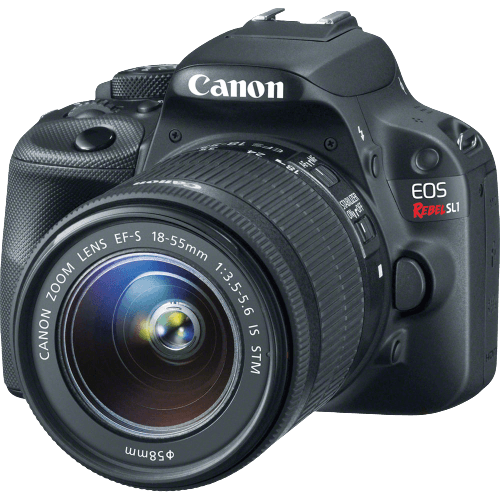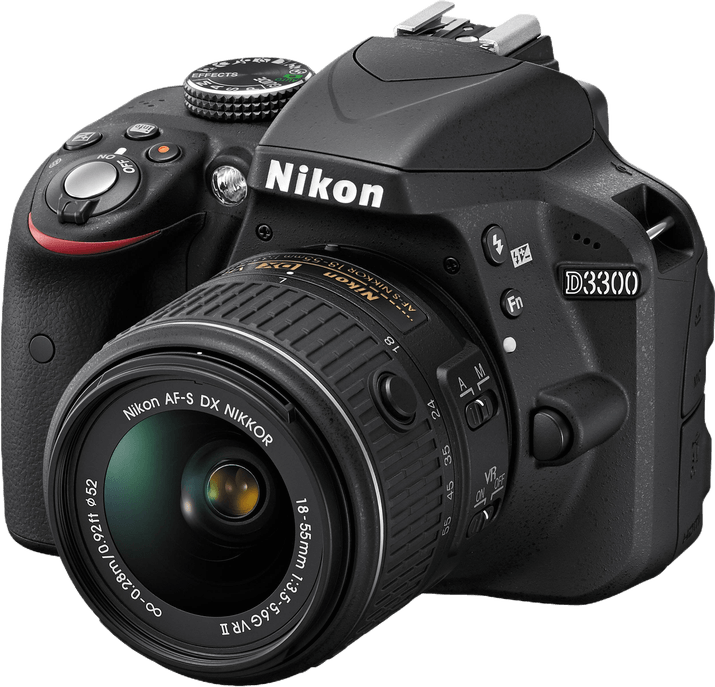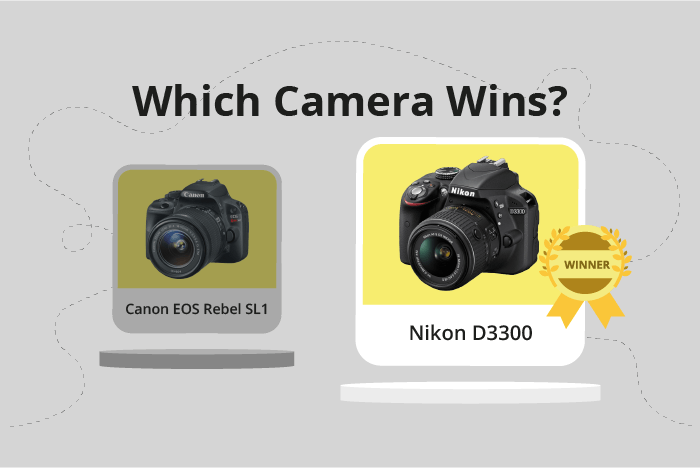Canon EOS Rebel SL1 / 100D vs Nikon D3300 Comparison
Canon EOS Rebel SL1 / 100D

Nikon D3300

The Nikon D3300 outperforms the Canon EOS Rebel SL1 / 100D with a score of 55/100 compared to 43/100. Both DSLR cameras were launched in 2013 and 2014, respectively, with the same initial price of $650. They share similar dimensions, with the Nikon D3300 being slightly larger at 124 x 98 x 76mm and heavier at 430g, while the Canon SL1 measures 117 x 91 x 69mm and weighs 407g.
The Nikon D3300’s higher score indicates its superior performance in various aspects, such as image quality, autofocus, and low-light capabilities. On the other hand, the Canon SL1’s advantage lies in its smaller size and lighter weight, making it more portable and convenient for travel and everyday use.
Taking all factors into consideration, the Nikon D3300 is the better choice for those seeking enhanced performance and image quality, while the Canon SL1 is more suited for users who prioritize portability and ease of use.
Canon EOS Rebel SL1 / 100D vs Nikon D3300 Overview and Optics
The Nikon D3300 outperforms the Canon EOS Rebel SL1 / 100D in the optics department with a score of 64/100, compared to the Canon’s 40/100. Both cameras share some common specifications, such as having a CMOS sensor, APS-C sensor size, and no image stabilization. They also have different lens mounts, with the Canon using an EF-S mount and the Nikon using an F DX mount.
The Nikon D3300 has several advantages over the Canon SL1 / 100D. Firstly, it has a higher megapixel count at 24.2, compared to the Canon’s 18 megapixels. This means the Nikon can capture more detail in images. Additionally, the Nikon has a faster shooting speed of 5 frames per second, compared to the Canon’s 4 frames per second. This makes the Nikon better suited for capturing fast action shots. Furthermore, the Nikon’s Expeed 4 processor and a DXOMARK sensor score of 82 contribute to its superior image quality.
The Canon SL1 / 100D, on the other hand, has a Digic 5 processor and a lower DXOMARK sensor score of 63. While it may not surpass the Nikon in terms of optics, the Canon still produces good quality images and offers a more compact and lightweight design. This makes it a more portable option for photographers who prioritize size and weight over advanced optics.
To sum up, the Nikon D3300 offers better optics performance with a higher megapixel count, faster shooting speed, and a superior processor and sensor. The Canon SL1 / 100D, while not as strong in the optics department, provides a more compact and lightweight option for those who value portability.
Canon EOS Rebel SL1 / 100D vs Nikon D3300 Video Performance
The Nikon D3300 outperforms the Canon EOS Rebel SL1 / 100D in video capabilities, with a score of 56 to the Canon’s 43. Both cameras share some common specifications, such as Full HD video resolution and maximum video dimensions of 1920 x 1080. Neither camera has built-in time-lapse functionality.
The Nikon D3300’s higher score is due to its superior video frame rate of 60fps, compared to the Canon’s 30fps. This difference allows the Nikon to capture smoother and more detailed video, especially in fast-paced or action-packed scenes. The higher frame rate also provides more flexibility in post-production, such as creating slow-motion effects.
The Canon EOS Rebel SL1 / 100D does not offer any specific advantages in video capabilities over the Nikon D3300. Its lower frame rate of 30fps limits its performance in capturing fast-motion scenes and reduces its versatility in post-production.
Considering these points, the Nikon D3300 is the better choice for those prioritizing video capabilities. Its higher frame rate provides smoother, more detailed footage and greater flexibility in post-production. The Canon EOS Rebel SL1 / 100D, with its lower frame rate, does not offer any advantages in this area.
Canon EOS Rebel SL1 / 100D vs Nikon D3300 Features and Benefits
The Canon EOS Rebel SL1 / 100D emerges as the winner in the features comparison with a score of 57/100, while the Nikon D3300 lags behind with a score of 41/100. Both cameras share several specifications, including a 3-inch screen size, the absence of a flip screen, GPS, WIFI, and Bluetooth.
The Canon EOS Rebel SL1 / 100D outperforms the Nikon D3300 with its higher screen resolution of 1,040,000 dots, compared to the Nikon’s 921,000 dots. This higher resolution provides the Canon SL1 / 100D users with a crisper and clearer display. Additionally, the Canon SL1 / 100D has a touchscreen feature, which makes navigating the camera’s menu and settings much more convenient and user-friendly. This advantage sets the Canon SL1 / 100D apart from the Nikon D3300, which lacks a touchscreen.
On the other hand, the Nikon D3300 does not have any standout features that make it superior to the Canon SL1 / 100D in this comparison. Both cameras have the same screen size and lack additional features such as a flip screen, GPS, WIFI, and Bluetooth.
Taking all these points into consideration, the Canon EOS Rebel SL1 / 100D is the better choice in terms of features, offering a higher screen resolution and a touchscreen for a more user-friendly experience. The Nikon D3300, however, does not offer any advantages in this aspect, making the Canon SL1 / 100D the clear winner in this comparison.
Canon EOS Rebel SL1 / 100D vs Nikon D3300 Storage and Battery
The Nikon D3300 outperforms the Canon EOS Rebel SL1 / 100D in storage and battery with a score of 32/100, while the Canon scores 21/100. Both cameras have a single memory card slot and accept SD, SDHC, and SDXC cards. However, the Nikon D3300 has a longer battery life of 700 shots, compared to the Canon’s 380 shots. The Nikon’s battery type is EN-EL14a, whereas the Canon uses an LP-E12 battery. Neither camera offers USB charging.
The Nikon D3300’s advantage lies in its extended battery life, allowing for nearly twice as many shots as the Canon. This makes it more suitable for extended shooting sessions or trips where charging opportunities are limited. On the other hand, the Canon EOS Rebel SL1 / 100D does not have any significant advantages in storage and battery over the Nikon D3300.
Given these factors, the Nikon D3300 emerges as the better choice for photographers prioritizing battery life and storage capabilities, while the Canon EOS Rebel SL1 / 100D falls short in this comparison.
Alternatives to the Canon EOS Rebel SL1 / 100D and Nikon D3300
Are you still undecided about which camera is right for you? Have a look at these popular comparisons that feature the Canon EOS Rebel SL1 / 100D or the Nikon D3300:

